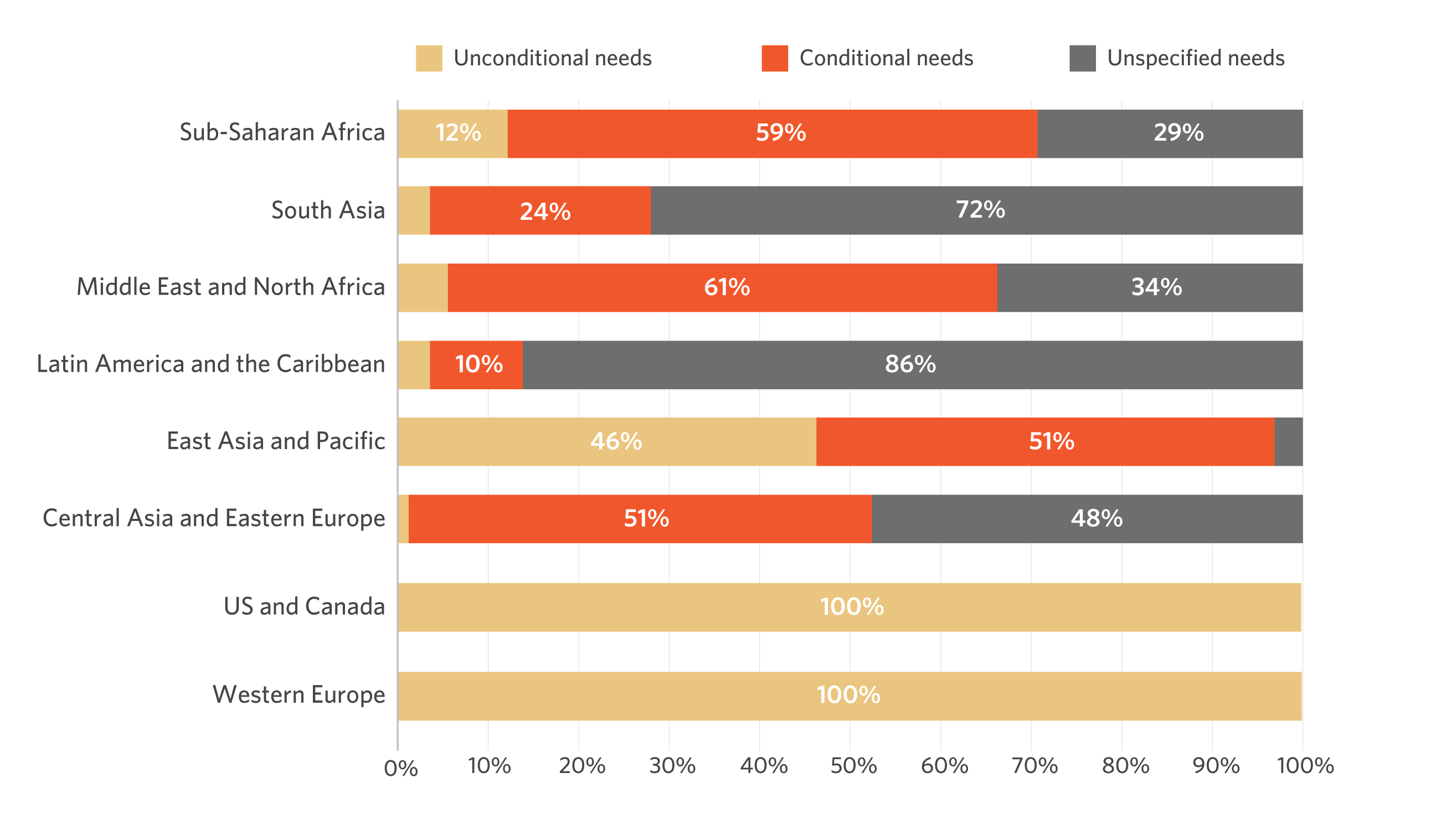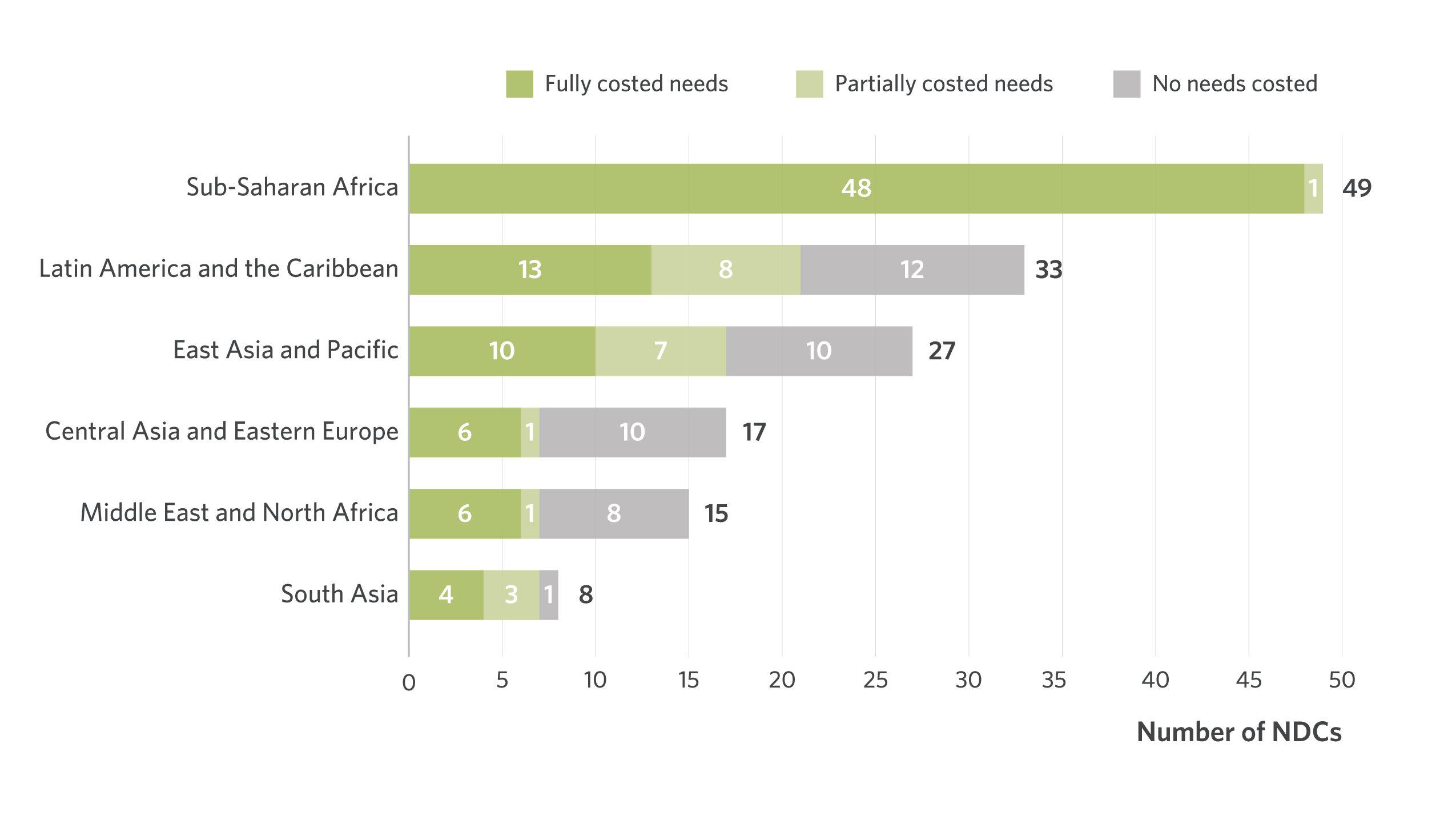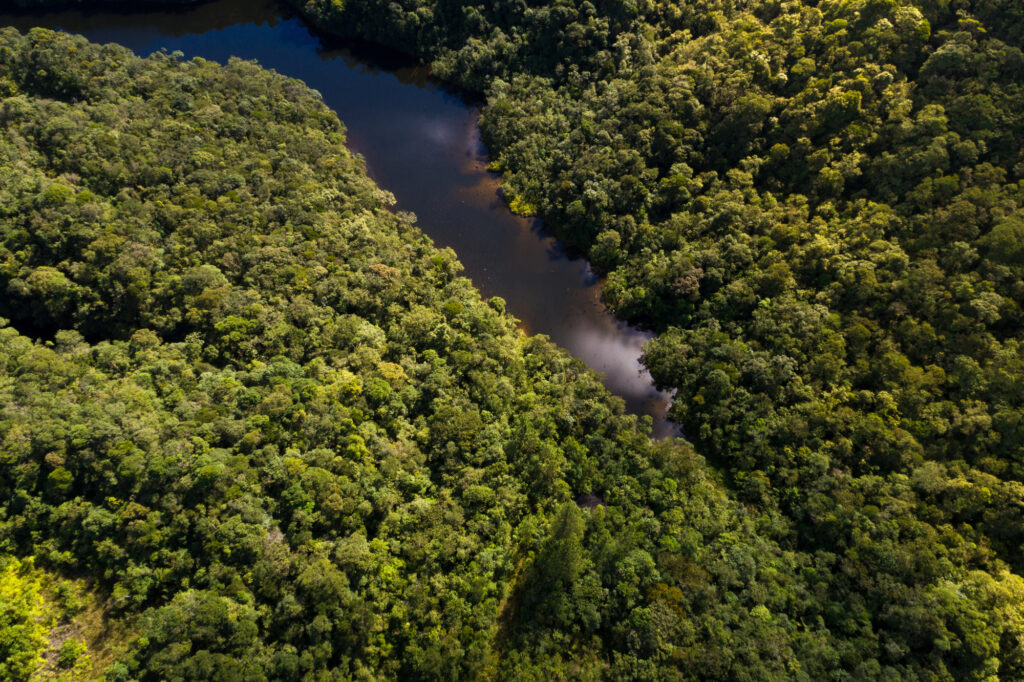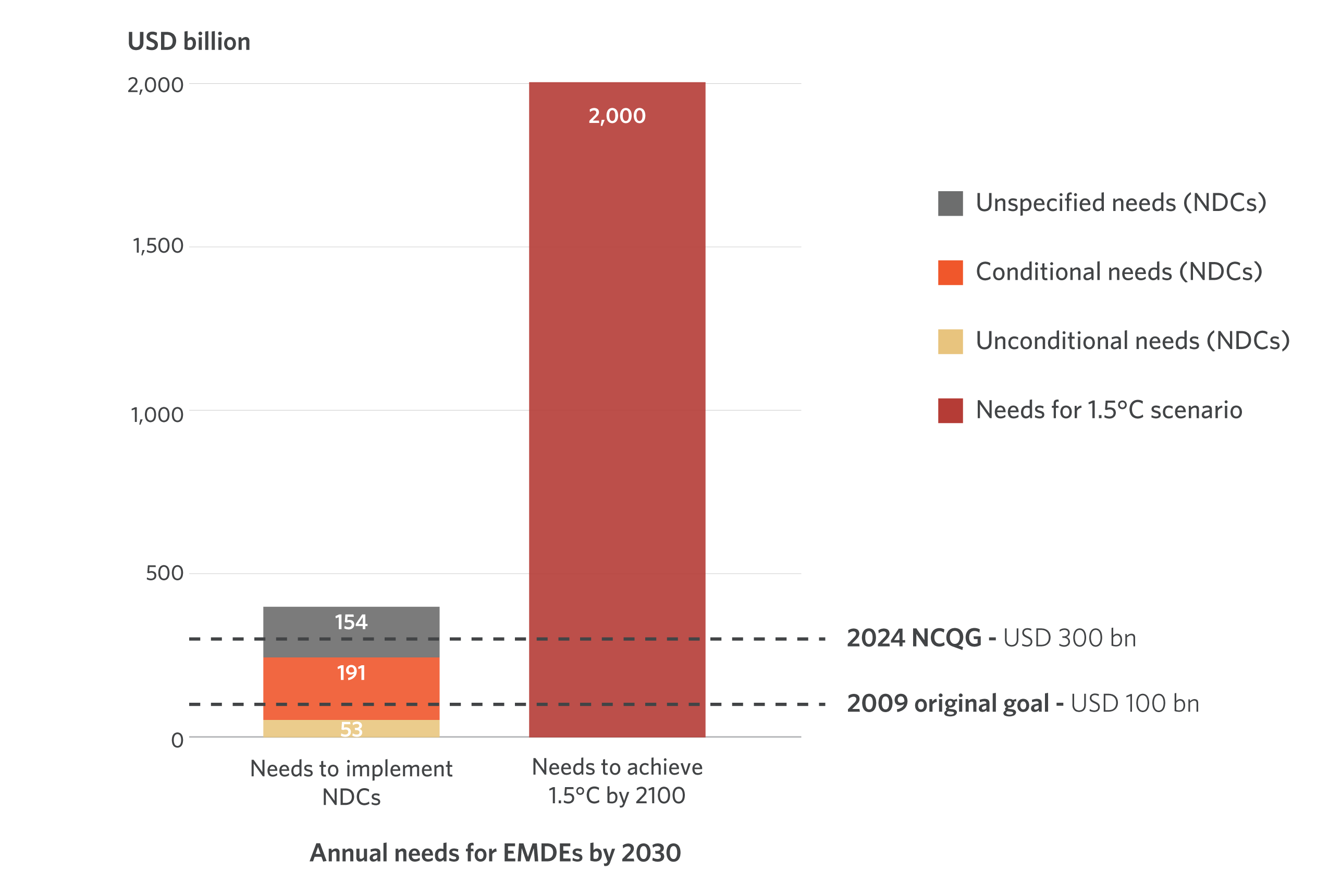While the USD 300 billion annual climate finance commitment set at COP29 is a first step to help fill the climate finance gap, the upcoming updates of Nationally Determined Contributions (NDCs) in 2025 offer a further opportunity for actors to work together and enable the scaling up of financing from all public and private sources. Achieving this requires major strides to improve the quality, transparency, and coverage of country-level climate targets and related estimates of their climate finance needs.
You are viewing: Leveraging NDC updates to bridge the climate finance gap
How large is the climate finance gap?
While climate finance has grown at unprecedented rates in recent years, reaching USD 1.46 trillion in 2022, these flows still fall short of global needs. CPI’s latest Global Landscape of Climate Finance shows that we need to invest almost USD 7.4 trillion a year globally through 2030, of which at least USD 2.4 trillion is needed for emerging markets and developing economies (EMDEs), excluding China. In addition, EMDEs are often the most vulnerable to the impacts of climate change, despite their relatively low contributions to global greenhouse gas emissions.
For example, Africa is one of the most climate-vulnerable regions—historically experiencing annual losses of 10-15% of GDP due to climate change—yet its mitigation and adaptation action is severely underfunded. The continent’s annual climate flows in 2021/22 accounted for only 23% of the estimated amount required to implement African countries’ NDCs and meet their climate goals by 2030. Many vulnerable EMDE countries require substantial international support to meet their climate objectives.
How much international support is needed to meet EMDE’s climate finance needs?
The New Collective Quantified Goal on Climate Finance (NCQG) established at COP29 sets a new target for developed countries to mobilize finance for climate action in developing countries at USD 300 billion annually by 2035. Three times larger than the USD 100 billion per year set at COP15 in 2009, the new commitment also highlights the need to further mobilize and unlock other pools of capital to meet the needs.
This gap in financial commitments also brings renewed attention to the implementation of Nationally Determined Contributions (NDCs), which outline each country’s climate action plans.
Annual climate finance needs of EMDEs as outline in existing NDCs is USD 400 billion. Only 13% of these needs are classified as being fundable through domestic public sources (referred to as “unconditional” contributions). The remaining climate finance gap will require international funding (“conditional”).
The future of NDCs and international climate finance
See more : Economists and policy experts warn Reeves against City deregulation | Financial sector
As noted above, the needs stated in NDCs are significantly lower than the total global finance required for 1.5°C alignment, and this does not even account for countries that have not yet quantified their climate finance needs in their NDCs.
Figure 1: Unconditional, conditional, and unspecified needs in countries’ NDCs, by region (%)

As countries prepare for their next round of NDCs in 2025—in accordance with the Paris Agreement requirement that Parties submit updated NDCs to the UNFCCC every five years—it is critical that countries increase ambition in their upcoming NDCs, to help provide clear signals to the international community of the level of investment required to achieve national climate goals.
Figure 2: The NCQG and NDC ambition compared to global climate finance needs for a 1.5 °C scenario for EMDEs [1]
The limits of country-level needs estimates
Therefore, estimates for country-level climate finance requirements need to be greatly improved. While some countries use predictive models aligned to a 1.5°C warming pathway to estimate their climate finance needs, most derive their needs from a list of costed mitigation and adaptation measures or projects that they aim to implement. In addition, many only partially quantify the amount of finance needed to implement their NDCs, while some do not carry out this exercise at all. More than one-quarter of NDCs for EMDEs do not include quantified climate finance needs (see Figure 3). For NDCs which do quantify climate finance needs, the methodologies used to estimate these needs are not standardized.
Figure 3: NDC climate finance needs coverage for EDMEs, by region

See more : ‘The joke is over’: Canadian finance minister says Trump’s ’51st US state’ remarks no longer funny
There is also no defined structure or mandated topics that must be covered in countries’ NDCs, which means that the scope and coverage of needs are inconsistent across regions and countries. The sectors and subsectors covered in NDCs also vary widely, and many do not disaggregate their financing requirements at the sector level.
This lack of granularity and standardization across countries’ estimates makes it difficult to compare or aggregate needs, and gives an incomplete picture of the amounts required to address pressing climate challenges, especially in the most vulnerable countries.
Recommendations for strengthening country-level climate finance targets
- Improve alignment across NDCs: The UNFCCC could develop a methodology and guidance to help countries set appropriate and transparent Paris-aligned climate targets, and accurately cost the investment needed to achieve them. While NDCs primarily reflect national priorities, countries should also consider investment needs at the global level to ensure their targets are aligned with a 1.5°C trajectory and promote global climate resilience. Guidance to standardize other topics in NDCs—such as adaptation, loss and damage, and the definition of conditional vs. unconditional finance—would also help to establish more comprehensive climate finance needs estimates and make them more comparable across countries and regions.
- Encourage public-private collaboration on NDCs for greater collective climate action: Meaningful engagement with the private sector in the design and revision of NDCs—and National Adaptation Plans—is critical to informing public policy and investment priorities. By outlining priorities for public investment in their NDCs, governments can create a conducive environment for private investment. Improved domestic finance targets within these documents would demonstrate strengthened commitment to climate goals, thereby building private and international investor confidence. Governments can provide policy coherence on their estimated expenditures on public goods, such as information systems and infrastructure, which could encourage the private sector to align more closely with NDCs.
- Increase international capacity-building support: Preparing and improving NDCs may be a challenge for EMDEs with limited capacities. Development institutions and private advisory groups could provide increased technical expertise, data infrastructure, and capacity-building programs to make accurate projections.
- Improve accountability frameworks: Strong measures are required to track progress towards NDCs to ensure accountability. The UNFCCC should establish a tracking and reporting procedure for measuring both the amount of finance committed and the implementation of NDC goals at the country level. Greater transparency of progress toward countries’ climate targets can reveal investment gaps, promote accountability, and encourage increased ambition in future goal setting.
Moving beyond the NCQG
While a focus of this year’s COP29 negotiations, it is important to remember that the NCQG is only one part of the equation. Closing the climate finance gap will require all sources of finance—domestic and international, public and private—to close the global climate investment gap. The focus must now immediately shift to delivering meaningful action.
As global climate leaders move from Baku to Belém next year, CPI’s work will remain critical in understanding the sources, instruments, uses, and needs of climate finance across the public and private sectors to help drive global climate action at scale.
[1] IHLEG, 2022. Finance for climate action: Scaling up investment for climate and development. Available at:
Source link https://www.climatepolicyinitiative.org/leveraging-ndc-updates-to-bridge-the-climate-finance-gap/
Source: https://summacumlaude.site
Category: News







